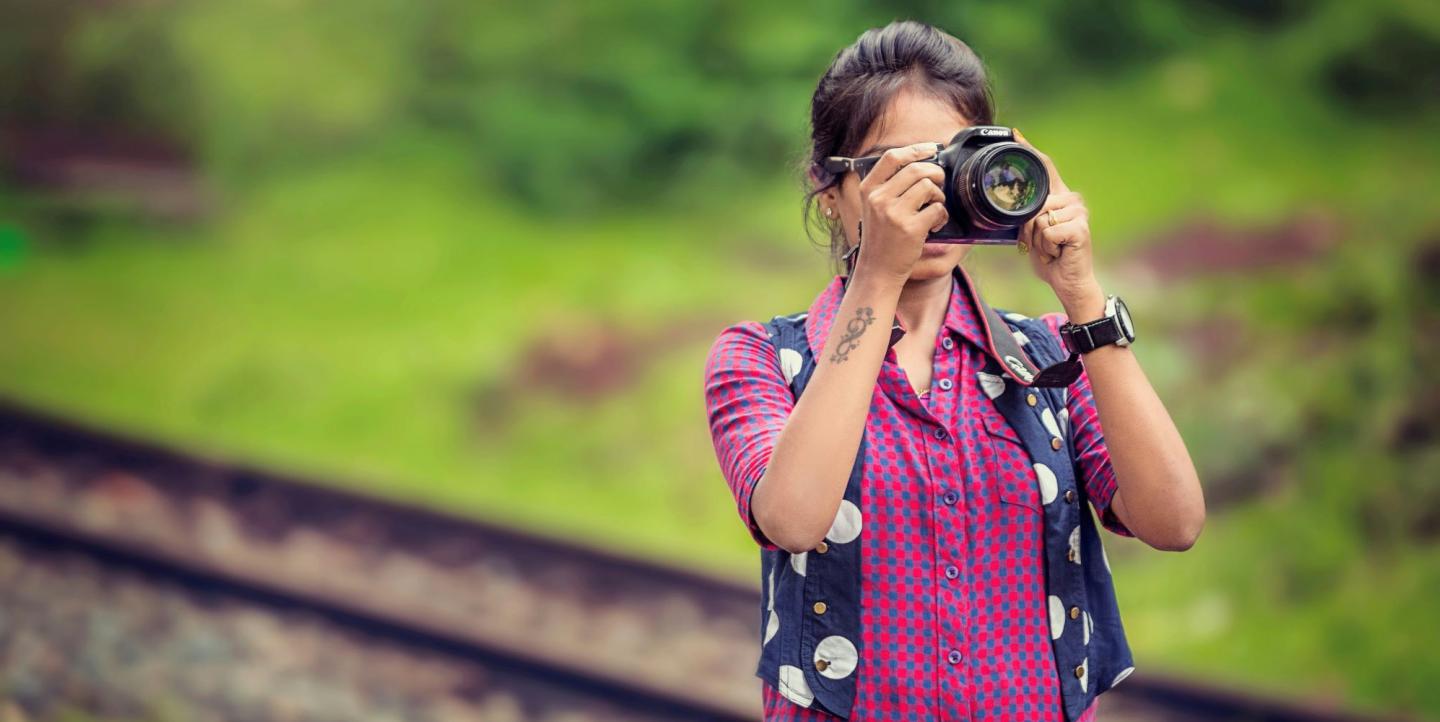On a sweltering summer afternoon in June, Saroj Paraste shuffled between work and cooling herself off to finish editing her video report about community-led efforts that brought electricity to a remote village in the Dindori district of central India’s Madhya Pradesh state.
The video was to be submitted to her editor at Video Volunteers, a participatory media project that trains community storytellers in India to produce videos on issues affecting underprivileged groups. Paraste is one of these community storytellers, who total 200 across India today, all from underrepresented communities.
Like Paraste, who has been a contributor for almost a decade, most of the creators at Video Volunteers are not formally educated and come from the most marginalized sections of society. Almost all of them also work daily wage jobs, for instance as agricultural laborers or vegetable sellers. Paraste is herself a member of one of India’s largest tribes, the Gond, which lacks access to fundamental resources like electricity and connectivity.
“These issues used to leave me angry, and I really wanted to do something about it,” she said. “I was working with the self-help groups in the village when I learned about a newly founded organization looking for people who had knowledge about their communities and wanted to become changemakers in society,” she said. “I instantly applied to be one.”
Paraste had never used a smartphone before learning to operate a phone camera through Video Volunteers’ orientation training. She has since created over 350 videos on various issues affecting her community. These videos, she said, “would never find space or make for a news report in a mainstream news channel in India.”
Marginalized voices
India’s population of 1.4 billion people, two thirds of which live in rural areas, includes a diversity of caste, ethnic and religious minorities. These voices are rarely heard from in mainstream media coverage in the country.
“Representation of marginalized communities has been an unattended problem across newsrooms in India,” said Ruben Banerjee, a senior journalist and former editor-in-chief of Outlook magazine.
One report published by Oxfam India and media watchdog Newslaundry found that roughly nine in 10 leadership roles at English-language television channels and newspapers are held by people from upper castes. Representation from marginalized groups such as Dalits, tribal communities, and Other Backward Classes was negligible. “In Indian media, diversity of voices has still not become a priority. Neither have issues of rural India, because rural stories may not be lucrative in bringing advertisements and sponsorships for corporate-backed media outlets,” Banerjee explained.
Jessica Mayberry and Stalin K. created Video Volunteers in 2003 to serve as a news agency for the country’s marginalized communities, and to help bridge the divide between rural and urban India. Today, Video Volunteers provides extensive coverage from India’s poorest and most media-deprived regions through stories produced by individuals living below the poverty line, classified as those who earn less than half a dollar a day.
“Voicelessness is a complex problem with many social, political, cultural and economic factors at play,” said Mayberry, who came to India from the U.S. as part of a fellowship program in the early 2000s. In the years since, she has trained and worked with community storytellers to create a media ecosystem that thrives on people telling stories “through the eyes of those who live it.”
“We don’t just work to enable and amplify community voices, but also explore how institutions can ‘hear’ that voice, learn from it and implement it in policy and decision-making,” said Mayberry.
Tangible change
Amol Lalzara, a Dalit film enthusiast who has lived his entire life in a slum near India's financial capital, Mumbai, has contributed to Video Volunteers since he was 17 years old. Now 38, he makes a living driving a rickshaw during the day and operating a single-screen movie theater at night.
“I was already fascinated with video-making,” said Lalzara. “When the opportunity came, I just applied. I had never thought that I would actually be able to become a video maker. What makes me the happiest is that even I can ask questions,” he said. Lalzara has produced over 400 videos with Video Volunteers on topics such as urban poverty, the environment, health and fishing.
The grassroots reporting approach employed by hundreds of community video creators like Paraste and Lalzara has helped raise awareness about pressing problems in their communities, mobilized community action and held local authorities accountable.
Paraste, for example, recalled how her reporting in the Dindori district of Madhya Pradesh helped bring electricity to the community. “In 2019, I made a video on the issue and ensured it was screened in the village council and district office. Since then, I have been making follow-up videos on the matter,” she said. “Finally, last month, the village of about 100 people got an electricity connection.”
Both Paraste and Lalzara currently are working on long–form documentary films showcasing the stories of everyday people in local communities.
Mayberry ensures that their hard work and effort are compensated. Each community video maker gets paid between 1,500 rupees (US$18) and 3,500 rupees (US$42) per video. If a video creates an impact, then it turns into an ‘impact video,’ which earns them 5,000 rupees (US$60). Compare this to the minimum daily wage in India of approximately 178 rupees, or just over US$2.
Still, as creators with Video Volunteers usually only produce four to five videos a month, they typically make around US$150-200 per month, said Lalzara – a challenging amount to provide for a family.
Despite this, Lalzara said he truly enjoys what he does. “This has become my passion,” he said. “I would never want to give up the voice that I have now.”
For Paraste, working as a community storyteller has also boosted her personal confidence: “There was a time when I could not speak even in a small gathering. Today, I report in a crowd.”
Photo by Aravind Kumar on Unsplash.


